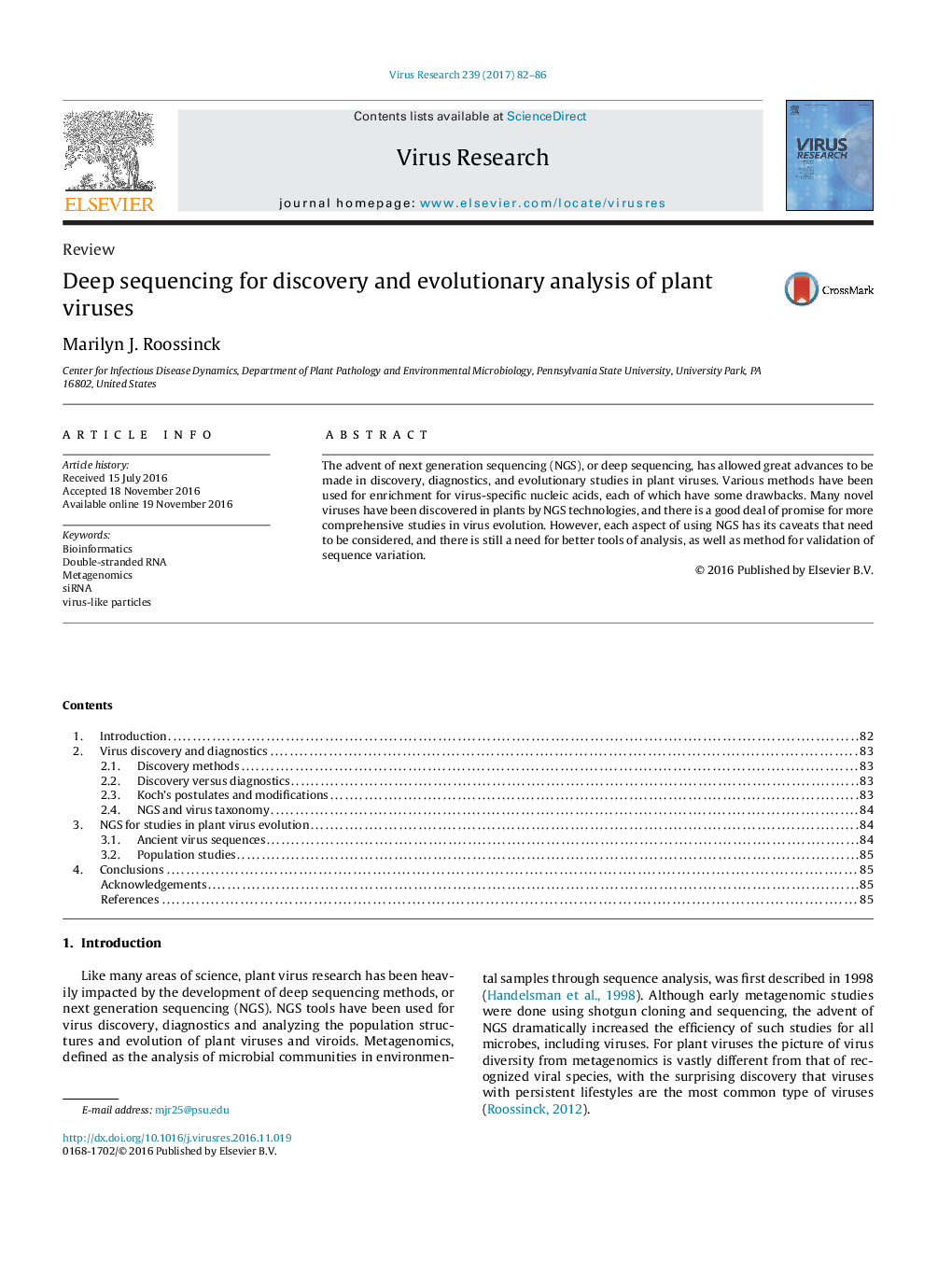| Article ID | Journal | Published Year | Pages | File Type |
|---|---|---|---|---|
| 5675513 | Virus Research | 2017 | 5 Pages |
â¢Next generation sequencing has been used very successfully for plant virus discovery.â¢Various methods can be used depending on the desired outcome.â¢Using NGS for diagnostics requires more than just the identification of a virus sequence in a diseased host.â¢Acceptable methods for using metagenomic data for virus taxonomy are being developed.â¢Caution is required for using NGS data in evolutionary studies; the error prone nature of NGS must be considered.
The advent of next generation sequencing (NGS), or deep sequencing, has allowed great advances to be made in discovery, diagnostics, and evolutionary studies in plant viruses. Various methods have been used for enrichment for virus-specific nucleic acids, each of which have some drawbacks. Many novel viruses have been discovered in plants by NGS technologies, and there is a good deal of promise for more comprehensive studies in virus evolution. However, each aspect of using NGS has its caveats that need to be considered, and there is still a need for better tools of analysis, as well as method for validation of sequence variation.
